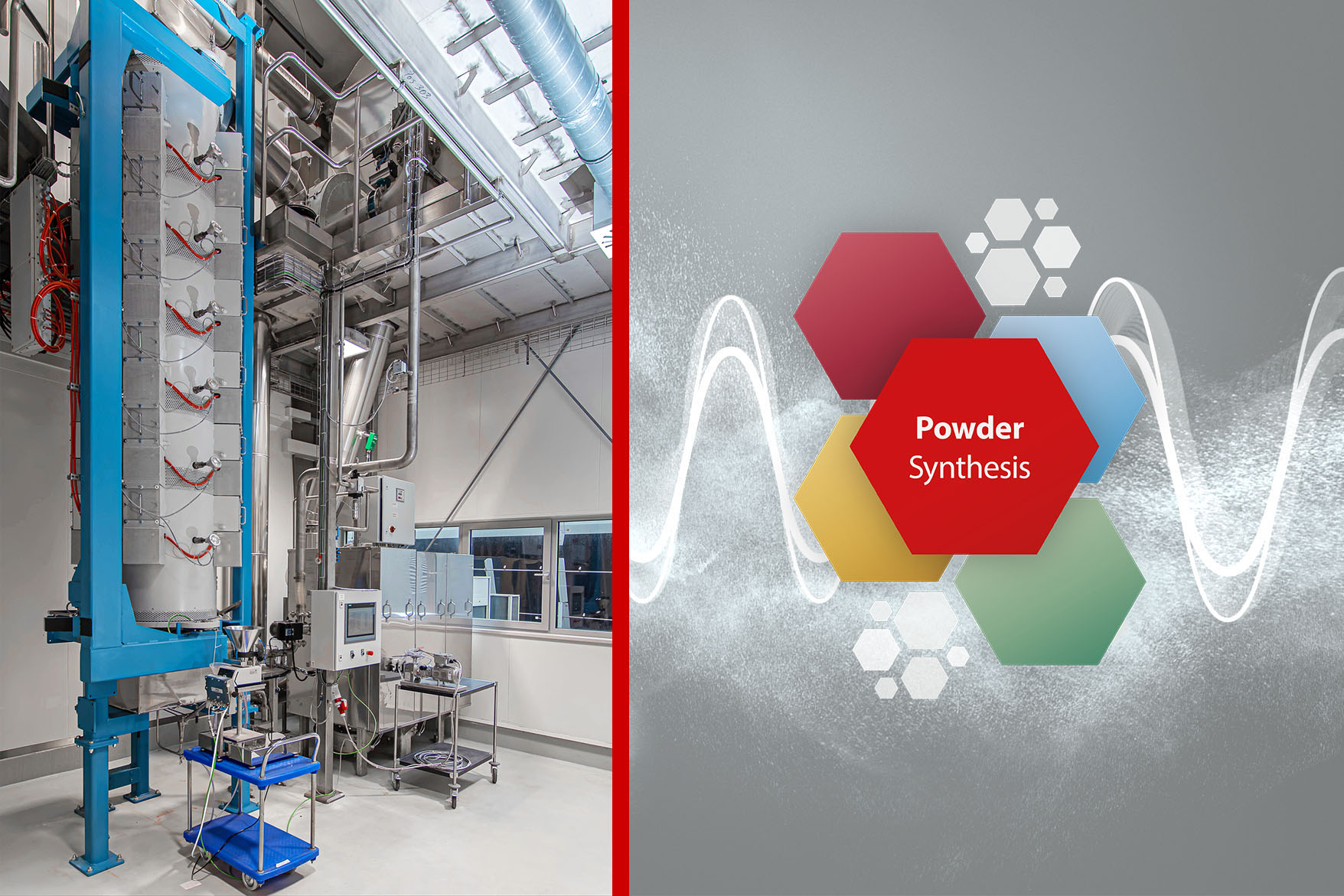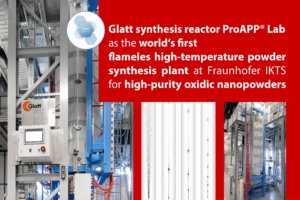Forward-looking plant planning – How pre-engineering can bring ideas to market faster
To stay ahead in the race for successful new product launches, the concept phase is crucial. Plant manufacturer and process expert Glatt uses pre-engineering to put investment decisions on a firm basis and enables its customers to bring forward sub-projects.
- Author: Clifford Schäfersküpper, Head Project Execution Process Technology Food, Feed & Fine Chemicals, Glatt Ingenieurtechnik GmbH
- originally published in the magazine ‘cpp – chemical plants & processes’, issue 01/2022, Konradin Verlag Robert Kohlhammer GmbH
- online at process-technology-online.com
Preparing to make an investment decision can bring beads of sweat to the foreheads of R&D experts, product developers and founders alike. Often, they lack an overview of the project’s scope and details, and have to assess both risks regarding future operations and the profitability of possible alternatives. Gathering realistic data and facts sometimes exceeds the capacities and specific know-how of those in charge of the preparation process. As such, assumptions and vague estimates can lead to inaccurate procect funding, as well as milestones and potential benefits not being achieved. Newspaper headlines about out-of-control projects vividly demonstrate how costly and damaging to a company’s reputation this can be. As a result, engineering expertise is crucial prior to investment decisions being made. Plant manufacturer and process expert Glatt offers pre-engineering solutions and develops realistic cost estimates. Industrial customers know Glatt primarily from the pharmaceutical sector, wherein pre-engineering phases are common. Pharmaceutical companys often experience a high level of competitive pressure, strict regulations and complex processes with frequent product changes. In these cases, parallel engineering and early planning services during the early stages of making an investment decision can avoid expensive changes later in the project and bring new developments to market quickly. These concept studies however also have value in the chemical, food and feed industries. In fact, each pre-engineering phase improves both Capex estimations and subsequent Opex forecasts, which results in a more realistic picture of the customer‘s overall business case.
The early concept phase
In the role of the future plant builder, Glatt prepares basic documents during the early concept phase that are fundamental for the direction of a project and form the basis for the subsequent engineering and construction of the plant. Possible project and product risks that could delay or impact the project are identified early on and tracked separately. The precise description of the specified “work order” makes it easy to identify potential deviations from the plan. Furthermore, any risk of escalating changes and associated cost increases are reduced or even avoided. A project map should also be included at the beginning that provides a 360° view of all existing plant areas and equipment – as well as those to be purchased – and gives an overview of the total investment and any interfaces. All relevant areas should be shown in the process flow diagram, including an initial interface list.
The equipment list initially details the main equipment, including dimension and weight data, which Glatt generates from databases or from empirical values of completed projects. The weight data considers the separate states of “empty”, “in operation” and “in the event of a disaster”, provides information about structural safety requirements and constitutes an important basis for the structural engineering concept planning. Of course, documentation is updated during the course of the project and, ultimately, contains all the necessary information including room co-ordinates, connection types and process conditions.
Consumption and connected values
Pre-engineering also provides concrete figures with regard to the expected economic efficiency of a system. Connection values are included in the investment costs and consumption values determine the economic efficiency during operation. At Glatt, the experience has been made that many companies estimate operating costs incorrectly because they use the higher connection values as a basis. In laboratory tests at the company’s technology centre in Weimar, the engineers determine the consumption values that can be expected from fluidised bed systems, for example. At the same time, they investigate the in-principle feasibility of the process and calculate the engineering design costs on the basis of the determined process data.
For technologically demanding products with special properties, additional scale-up trials on a pilot plant are offered to confirm the test data, operational parameters and, ultimately, the quality of the required product. All those engineering services are basically technology-independent. The engineers determine the most economical solution with the most suitable process technology for each customer. Data from such concept phases ultimately allows Glatt to be contractually responsible for important project and product parameters in the event of a continued assignment, and relieve the customer of important project risks.
From the bird’s eye view
The next step is a preliminary layout – the bird’s eye view of future production. From numerous projects on almost every continent, the specialists know what space needs to be reserved for operating, staging and mainte-nance areas, as well as escape routes. This wealth of experience also flows into the rough time schedule, which serves as a roadmap from the time the contract is signed.
At the end of the concept phase, the planners prepare a concept report, which usually contains a preliminary process description and later forms the basis for the process and operating manual. By commissioning the preparation of these specifications, the client minimises an important risk: price and approval-relevant quantity thresholds for hazardous substances, according to the Federal Immission Control Act, for example, can be clarified. A complete set of specifications reduces the amount of uncertainty in the cost estimate to well below 30 %. This increases planning security and provides objective, reliable specifications for project control.
Any questions regarding the most economical solution are best answered by alternative variants. To this end, Glatt not only calculates process and setup-related options, but also international location variants, as well as structural or design alternatives, which are examined and evaluated in the concept phase. This also applies to the expansion of brownfield projects. If Glatt is subsequently commissioned, various contract models are conceivable – from the different variants of an EP contract to a turnkey project.
Revamping: more than optimisation
To increase the value retention and performance of an existing plant, all production and consumption data generated during operation are put to the test during revamping. This provides an opportunity to discuss installation variants and to substantiate conceptual considerations with realistic figures. In any case the goal is to be technically state-of-the-art and to improve overall production. Improvements can be made, for example, with more economical or energy efficient operation, by using more contemporary handling/ergonomic solutions and/or by increasing production capacity. However, whether it is an existing plant or a greenfield project, when it comes to the efficient implementation of investment projects, the secret of success lies in the concept phase. With technology-independent pre-engineering, reliable data at all levels are available.
Further information on this topic and related topics can also be found in the following publications:
June 2021: ‘Fraunhofer IKTS operates world’s first flameless high-temperature powder synthesis plant’
Published article: ‘Ceramic Raw Materials from the Pulsating Hot Gas Stream’ PDF, English
Published article: ‘New Battery Material by Powder Synthesis’ PDF, English
Published article: ‘From Hot Gas Stream to Matt Finish by Glatt Powder Synthesis’ PDF, English







 Copyright: Glatt
Copyright: Glatt Copyright: Glatt
Copyright: Glatt